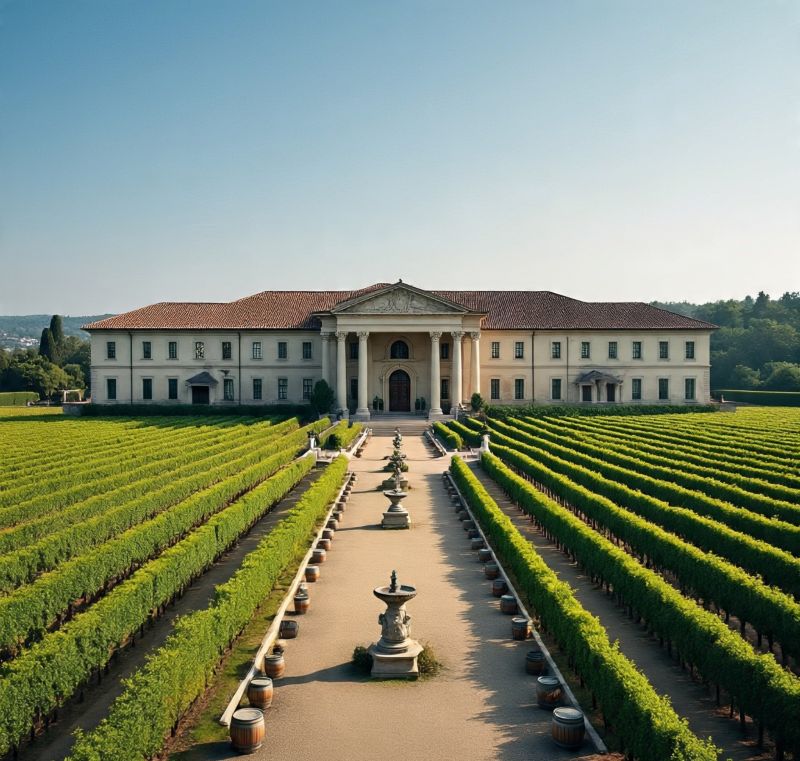Published on
August 22, 2025

Hillside Living in Calistoga
Observers explained that on the wooded ridges of Calistoga, overlooking the iconic vineyards of Napa Valley, preparations were being made for a retreat scheduled to open in January 2027. Reports suggested that this project would include 20 private villas and 13 homesites, all designed in such a way that the buildings seemed to flow with the terrain rather than dominate it.
Those describing the vision noted that the architecture was imagined as an extension of the land itself, merging modern sophistication with organic simplicity. Each structure, they said, would mirror the rhythms of the valley, taking inspiration from its colors, textures, and seasonal transformations.
Commentators emphasized that the retreat was not being planned as merely a place for visitors to sleep. Instead, it was portrayed as a lifestyle destination, one that centered on authenticity, peace, and belonging. It was explained that residents and visitors would have access not only to private living spaces, but also to thoughtfully curated dining experiences, opportunities for wellness, and communal gathering areas designed to celebrate the culture and natural beauty of the surrounding environment.
Wellness Rooted in Regeneration
Accounts revealed that at the very heart of this project lay a philosophy of holistic renewal, intended to bring balance to the mind, body, and spirit. Sources described how the wellness sanctuary—tucked away in the forest—was being designed with six treatment rooms, a tranquil garden, hydrotherapy facilities, and a fully equipped fitness center.
It was stressed that these offerings were planned to accommodate every type of traveler. The property was said to include two pools with distinct purposes: one for adults only, envisioned as a serene and reflective space, and another intended for families. Children, observers noted, had not been overlooked. Reports highlighted the inclusion of an exploration club that would allow younger visitors to engage in creative play and discovery.
Those examining the project added that over 20,000 square feet of versatile indoor and outdoor space had been designed to host weddings, cultural events, and celebrations. These venues were not being built only for practical use but also to serve as places for connection, storytelling, and shared community experiences.
The guiding idea, according to reports, was to encourage clarity, renewal, and presence, enabling guests to slow down, reconnect with nature, and rediscover themselves in the process.
Culinary Journeys Inspired by Napa Valley
Commentators made clear that life at the estate was expected to reflect the agricultural abundance of Napa Valley. They noted that much of the cuisine would be sourced from the property’s gardens and surrounding farms and vineyards. This, it was said, would ensure that each dish carried a genuine sense of place.
A signature restaurant was described as the centerpiece of the culinary program, following an earth-to-table philosophy where menus would evolve with the seasons. Reports highlighted that travelers would enjoy fresh produce, organic meats, and sustainably sourced seafood from the nearby Pacific Ocean.
Those familiar with the development pointed out that other dining experiences would also be available, including:
- An intimate cocktail lounge featuring refined mixology
- A wine program celebrating Napa’s enduring winemaking traditions
- A poolside restaurant providing sweeping vineyard views
Observers emphasized that food at this retreat was not envisioned as simple nourishment. Instead, it was said to be a cultural bridge, bringing people together through shared traditions. They predicted that events like vineyard dinners under the stars, hands-on cooking workshops, and artisan-led tastings would become core experiences, deepening both social connections and cultural appreciation.
Architecture in Dialogue with the Landscape
Analysts described how the retreat, spread across 118 acres, had been designed as a conversation between land and architecture. They explained that the plan was not to overwhelm its surroundings but rather to follow the natural contours of the ridgeline, keeping structures low-profile and unobtrusive.
It was reported that local and natural materials would be used deliberately, ensuring the property remained tied to its roots. Within the residences, the design aesthetic was expected to strike a careful balance between modern refinement and the warmth of wine country traditions.
Interior details were said to highlight natural textures, seasonal motifs, and locally inspired elements, ensuring that the spaces felt like an extension of the valley’s natural rhythms. Experts stated that the larger vision was not about creating a conventional tourist destination. Instead, the intention was to build a living ecosystem where discovery, renewal, and community could arise organically.
Significance for Global Travel and Tourism
Analysts stressed that the impact of this retreat would stretch well beyond California. They argued that the development reflected a global shift in tourism and hospitality, where increasing numbers of travelers were demanding sustainable luxury—experiences that respected and celebrated their surroundings instead of exploiting them.
This project, they said, provided a strong example of key global trends shaping modern travel, including:
- The growing demand for eco-conscious resorts that protect their natural settings
- The move toward smaller-scale, intimate experiences over mass-market tourism
- The integration of wellness, gastronomy, and cultural immersion into luxury hospitality
Experts suggested that travelers around the world were moving away from generic resorts that looked and felt the same no matter the destination. Instead, people were now seeking places that honored the identity of the land and the traditions of its people. It was argued that projects like the one in Calistoga could redefine what wine country tourism meant, not only in California but across regions around the globe facing similar pressures and opportunities.
Looking Ahead Napa Valley as a Guide for the Future
Industry observers concluded that when the hillside retreat opened in January 2027, it would come to symbolize much more than a collection of villas and homes. They described it as a community and sanctuary devoted to the enduring spirit of Napa Valley.
They explained that the true emphasis would not rest solely on traditional luxury. Instead, the retreat was envisioned as a place to foster authentic living, reminding travelers of life’s deeper essentials: presence, connection, and belonging.
For the travel industry as a whole, this development was expected to serve as a clear signal that destinations could evolve in thoughtful ways. Experts argued that places could remain loyal to their heritage and landscapes while still offering extraordinary and meaningful experiences to visitors.
Commentators ultimately believed that this retreat would become a model for future tourism worldwide, proving that destinations could grow responsibly while safeguarding their culture, environment, and identity.







